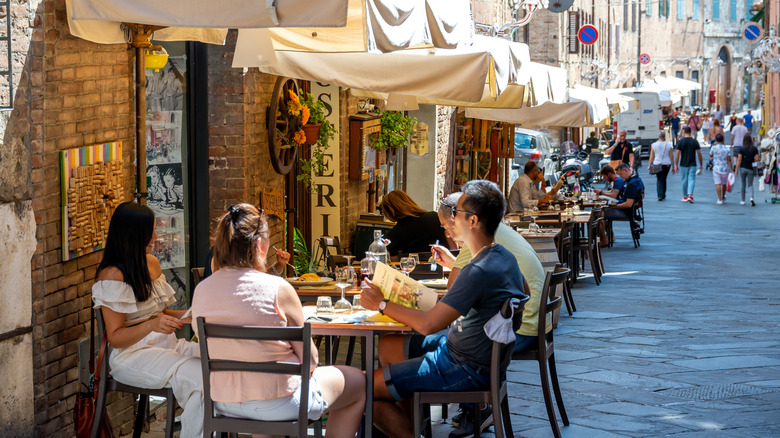How Restaurants In Italy Usually Serve Salads
When you think of an Italian salad, what comes to mind? Maybe antipasti with salami, mozzarella, and artichoke, or a bowl of mixed field greens topped with Italian dressing? While you may see these types of salads on the menu at Italian American restaurants in the U.S., Italians from Italy have different ideas about what constitutes a good salad.
For instance, while antipasto is full of ingredients Italians regularly eat, the dish itself isn't consumed in quite the same way in Italy. Antipasto in the motherland is usually eaten as an appetizer, and is meant to get you excited for the meal, not to fill you up, notes Cucina Toscana. In fact, as explained by The Spruce Eats, the word antipasto refers to a single appetizer dish, like olives, while antipasti (the plural form of the word) describes an entire course, often made up of multiple dishes.
When Italians do eat salad, it's usually as part of contorni, the side dishes served with the main courses, according to Bertolli. And while they do hold some similarities to the Italian American versions, salads served in authentic Italian restaurants differ in one key way.
Italians use a simple dressing
You can tell if you're eating a delectable Italian salad because the ingredients will be incredibly fresh. As is often the case for this cuisine, choosing seasonal ingredients is one of the crucial Italian produce tips you should know. And since Italian salads usually involve the most delicious veggies available, why smother them in overwhelming dressings? According to Fodor's Travel, most restaurants in Italy don't serve any dressing on salad at all, although as new cuisines are starting to be introduced, you may see options like Caesar salads on the menu.
Traditional Italian salads come simply with extra virgin olive oil, vinegar, and salt. But not just any of these condiments will do, says La Cucina Italiana; quality olive oil and white or red wine vinegar are the standards, as they won't overpower the flavor of the vegetables. If you order a salad in a typical Italian restaurant, Why Italians explains that it won't usually arrive dressed, but the ingredients will be there on the table for you to dress it yourself.
As for Italian dressing, Fodor's Travel shares that it's not actually used in Italy. Bottled Italian dressings in America are usually chock-full of extra ingredients like garlic, sugar, parmesan, and peppercorns in addition to oil and vinegar, making them too complicated for classic Italian tastes (via Culture Discovery). So if you'd like to eat salad like an Italian, stick to the basics — just make sure they're all quality ingredients.

